| Arheologija i kolekcionarstvo |
|
|
|
|
|
|
|
|
|
|
|
|
|
|
|
|
|
|
|
|
|
|
|
|
|
|
|
|
|
|
|
|
|
|
|
|
|
|
|
|
|
|
|
|
|
|
|
|
|
|
|
|
|
|
|
|
|
|
|
|
|
|
|
|
|
|
|
|
|
|
|
|
|
|
|
|
|
|
|
|
|
|
|
|
|
|
|
|
|
|
|
|
|
|
|
|
|
|
|
|
|
|
|
|
|
|
|
|
|
|

|
|
|
|
| |
Gracanica Monastery
Gracanica Monastery one of King Milutin's last monumental endowments. It is situated in the village of Gracanica, 5 km. from Pristina, the administrative centre of Kosovo and Metohija region. The monastery is in the close vicinity of Lipljan, the ancient Roman town of Ulpiana, and the old residence of bishops. Gracanica was constructed on the ruins of an older 13th-century church of the Theotokos, which was built on the ruins of a 6th-century early Christian three-naved basilica.
In the charter inscribed on the south wall of the chapel, King Milutin says: "I saw the devastation and fall of the church of the Holy Theotokos of Gracanica, Bishopric of Lipljan, I had it built from the foundation stone, I had it inscribed and decorated from the inside and from the outside." All this happened in the year 6830, that is, in 1321 since the birth of Christ. Only the church remains from the original monastery complex. The vestibule with the dome was additionally built several decades later. This vestibule was ruined during Turkish assaults in 1379-1383, when the dome was lost in fire, as well as a rich collection of manuscripts. The vestibule is believed to have been restored in 1383 by Bishop Simeon of Gracanica.
The monastery was damaged during the battle of Kosovo 1389, and when Novo Brdo was conquered in 1455, Metropolitan Benedict Crepovic left Gracanica and was granted use of the monastery Vracevsnica by Despot Djuradj Brankovic. Better times for the monastery started during the incumbency of Metropolitan Nikanor (1528-1555), when a printing house, supervised by master-printer Dimitrije, was operating in Gracanica for a while. At that time, several icons were painted on the iconostasis, and Metropolitan Nikanor had the external vestibule painted and provided some liturgical books and other liturgical objects for the monastery. The royal door was ordered in 1564 by Metropolitan Dionisius, whose death is pictured on a fresco painting in the vestibule. Thanks to Patriarch Macarius Sokolovic. Gracanica monastery was considerably reconstructed: all the openings in the external vestibule were filled, and a new layer of frescoes was completed on September 3, 1570. Patriarch Paisius had the church covered with lead, and a cross with the crucifixion of Christ was manufactured in the 17th century, during the Great Migration of the Serbs under the patriarch Arsenije III Carnojevic. Devastation of the monastery was repeated in the middle of the 18th century. Somewhat later, Jegen-pasha had the lead roof and the floor tiles removed and taken to Pristina. In 1800, this tyrant, having repented for his crime, returned the lead roof and presented the monastery with a plot of land. Later, due to great pressure from the Turkish occupators, the monastery was deserted by monks and the church served as a parish church.
The architectural composition of Gracanica represents the peak of Serbian architecture in the spirit of Byzantine tradition. Unfortunately the rich Gracanica treasury was lost in fires between 1379 and 1383. The present treasury stores a number of valuable icons from the 16th, 17th and 18th centuries, as well as several significant manuscripts and liturgical objects.
After the Second World War it was renewed by nuns and has been serving as a convent since. Today there are 24 sisters in the monastery who are active in icon painting, agriculture, sewing and other monastic obediences.
After the war in Kosovo 1999 Bishop of Raska and Prizren Kyr Artemije transferred his official seat to this Monastery from Prizren and since then the monastery has become not only the most important spiritual but also the national and political center of the Serbian people in the Province. Bishop Artemije and the Serb National Council make everyday efforts to preserve the Serbian people in Kosovo.
FRESCOES OF GRACANICA MONASTERY
XIV Century
Click on each photo to see it in larger size

St. John the Baptist

St. Eliah in the cave

Crying over the Christ

Holy Martyrs

St. Anastasia and St. Symeon Nemanja

Serbian Queen Symonida

The Royal Vault 1

St. Milutin, the King of Serbia and the founder of the Monastery

The Royal Vault 2

St. Sava, the first Archbishop of Serbia and Ss. Constantine and Helen

The tomb of the Orthodox Bishop Theodore of Lipljan (Ulpiana), 14 th century

Грачаница (Gračanica)
The Gracanica monastery, near Lipljan in Kosovo and Metohia, is one of the last monumental foundations of King Milutin Nemanjic. Built on the ruins of the former Church of the Holy Virgin, the monastery, finished in 1321, was dedicated to the Dormition of the Holy Virgin. On the southern wall of the chapel is written the king's charter, including the following words: "I have seen the ruins and the decay of the Holy Virgin's temple of Gracanica, the bishopric of Lipljan, so I have built it from the ground and painted and decorated it both within and without".
Of the former monastic compound, only the church has survived. The narthex and the tower were added a few decades later, in order to protect the frescoes on the west facade. The narthex was heavily damaged by the Turks several times between 1379-1383, when the tower was burned and the fire devoured a rich collection of manuscripts and other precious objects. The narthex was reconstructed in 1383. Again, Gracanica suffered damages at the time of the Kosovo battle (1389).
During Turkish rule Gracanica became an important cultural center. In the time of Metropolitan Nikanor (1528-1555) several icons were painted on the altarpiece. Also, because of the printing press, Nikanor obtained numerous service books and objects for the monastic use. The royal doors were commissioned in 1564 by Metropolitan Dionisije, whose death is represented on a fresco in the narthex. Major restoration took place through efforts of Patriarch Makarije Sokolovic. All the openings on the external narthex were walled up and new frescoes were completed in 1570. Thanks to Patriarch Pajsije, the church got its leaden roofing, and in 1620 the large cross with the Crucifixion was made on the iconostasis. The monastery was exposed to new damages toward the end of the seventeenth century, in the war between Austria and Venice against the Turks, after the second siege of Vienna - in which the Serbs took part on the Christian side. They rebelled against the sultan Jeghen Pasha terrorizing Serbia, who removed the leaden cross and pulled out the floor tiles, together with the treasure hidden in the church by Patriarch Arsenije III.
Gracanica represents the culmination of the Serbian medieval art of building in the Byzantine tradition. The church has the form of a double inscribed cross, one inside the other, the inner one providing for a vertical silhouette so as to raise the central dome upwards on a graded elaboration of masses. The dome rests on four free-standing pillars. Above the spaces between the cross-shafts, four smaller domes give a regular structure to the whole crowning complex. Three three-sided apses (the central one being the largest) put a mild distinction on the altar space externally. The diaconicon and the prosthesis are separated by full walls. Between the nave and the narthex there are wide, heavy pillars and the catholicon is on a level higher. The church was built in alternate courses of brick and stone. At the end of the fourteenth century an exonarthex was added with double arcades, but these were blinded in the sixteenthth century.
In the church three kinds of painting can be discerned. The earliest is found in the nave, whereas two later ones can be recognized in the narthex. The frescoes were painted in 1321-22. The painting works have been well-preserved. The compositions in the nave deal with the earthly life of Jesus and the ecclesiastical calendar.
The focal paintings of Gracanica include the Festival Cycle, the Passion and the miracles of Christ. Inside the narthex, there are portraits of the founders: King Milutin and Queen Symonida, Queen Helen d'Anjou (king's mother) as a nun and King Milutin as a monk. Of particular importance is the Nemanjich dynasty genealogy, the first ever painted, which starts with Stefan Nemanja and ends with Milutin. Also in the narthex, there is an exhaustive illustration of the Last Judgment. The scenes from the life of St. Nicholas are in the north parecclesion, while the walls of the south one display scenes from the Old Testament and the lives of Christ and the Mother of God. The master painters supposedly were Michael and Eutihije with their assistants.
There are also considerable frescoes from 1570 in the exonarthex, commissioned by Patriarch Makarije Sokolovic. There are some paintings in the narthex that date back to the late fourteenth and early fifteenth centuries, including the Baptism of Jesus, parts of the Virgin's Akathistos Hymns and the Ecumenical Councils. Two subjects, however, dominate the narthex of Gracanica: the Doxology to the Holy Virgin and the procession of the Serbian archbishops from Saint Sava to Patriarch Makarije Sokolovic. A historical composition of the death of the Metropolitan of Gracanica Dionisije covers the southeastern part of the narthex.
The paintings of Gracanica rank highest among the achievements of Milutin's period, characterized by influences of the Byzantine splendiferous and luxurious style called the Paleologan Renaissance. In terms of style, they are also related to the art of the other of Milutin's foundations. |
|
GRACHANITSA AND ITS FRESCO PAINTINGS - 14th century
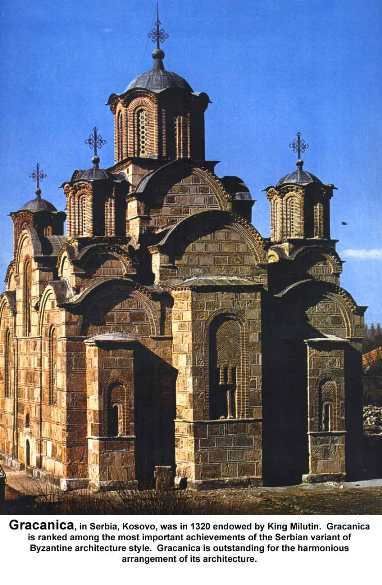
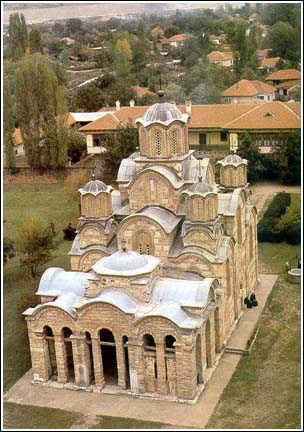

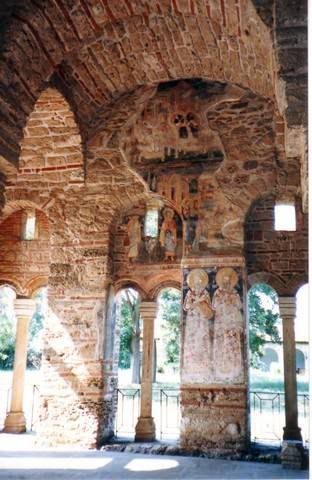
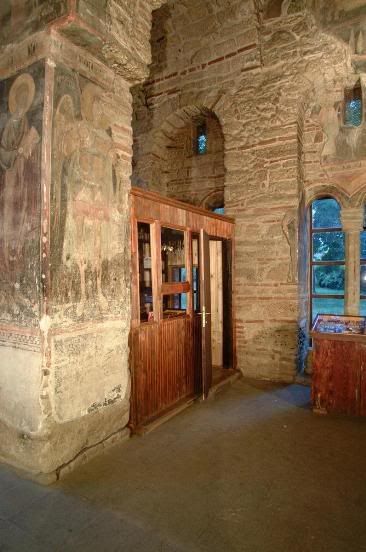
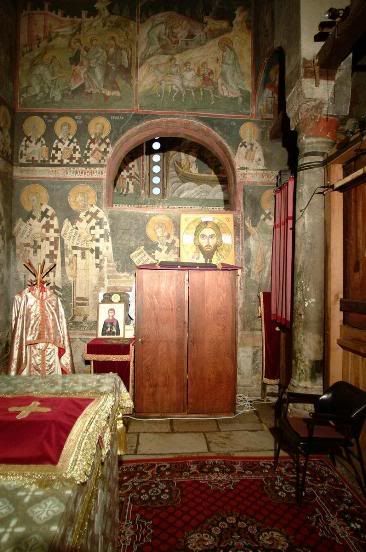
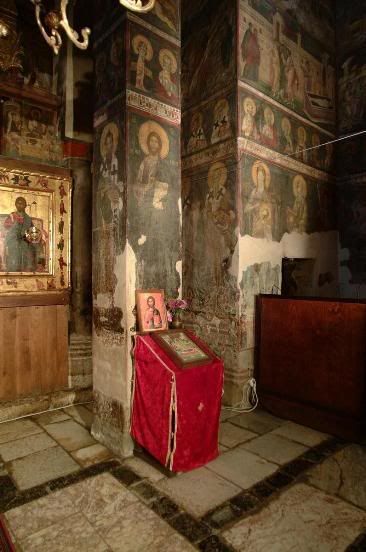
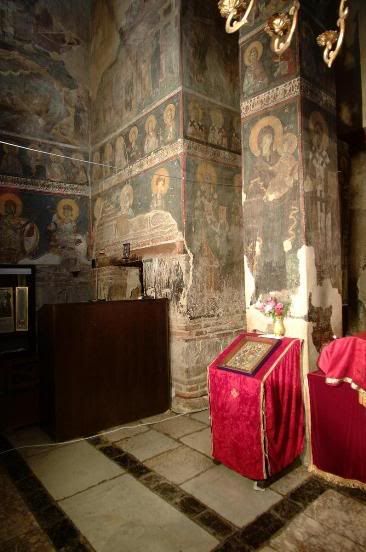
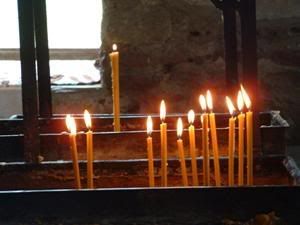
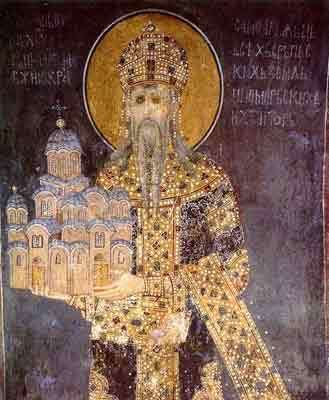
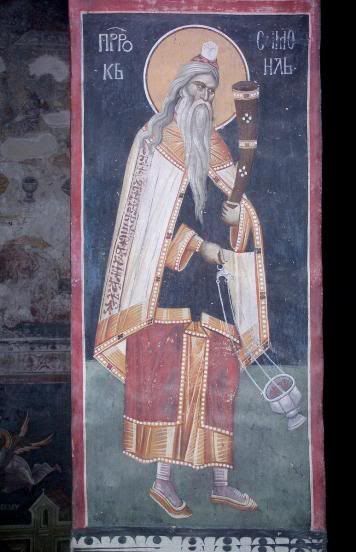
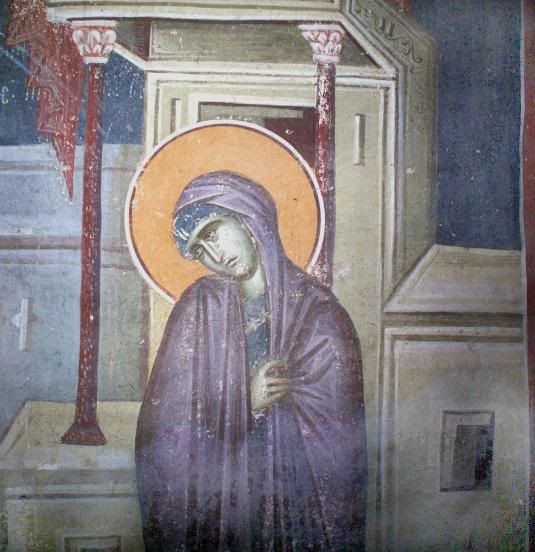
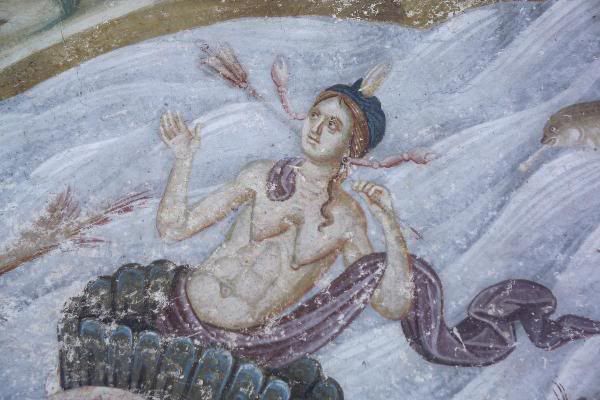
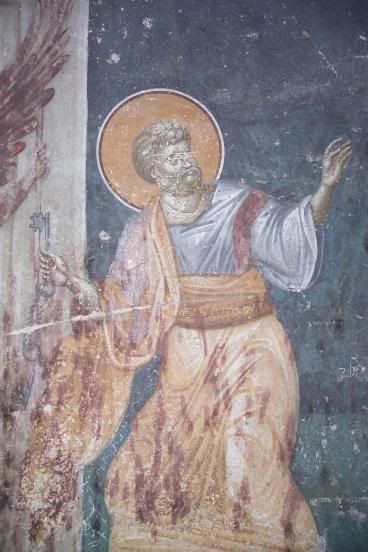
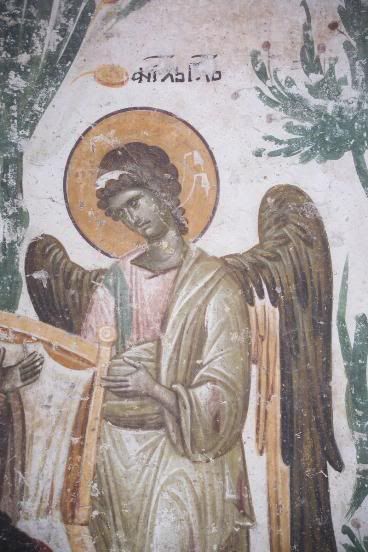
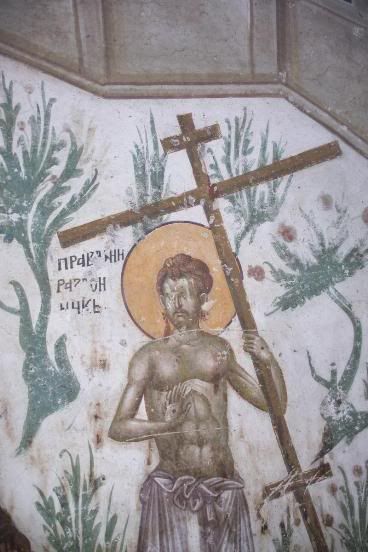

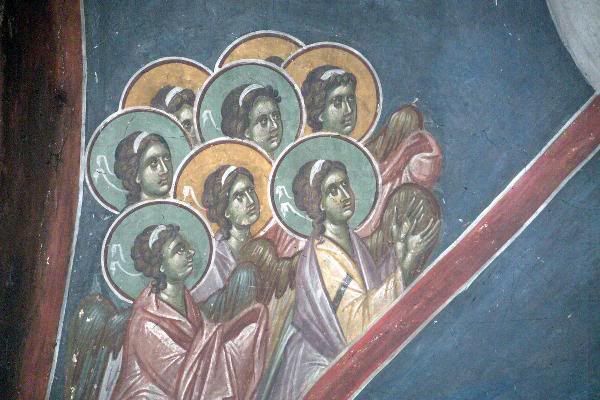
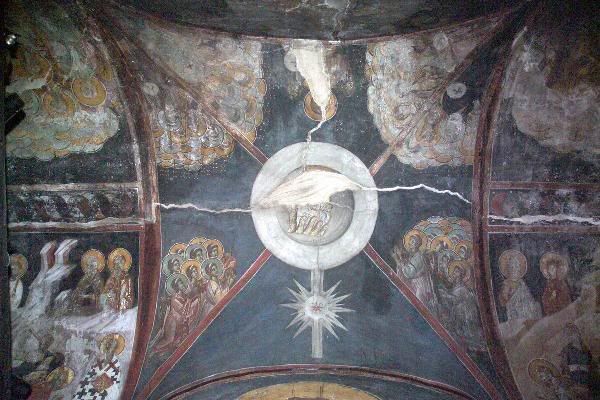
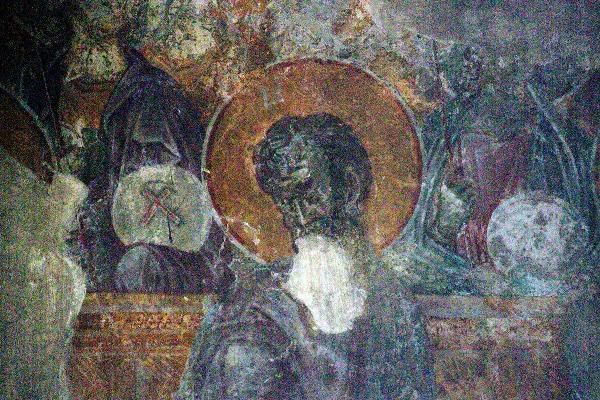
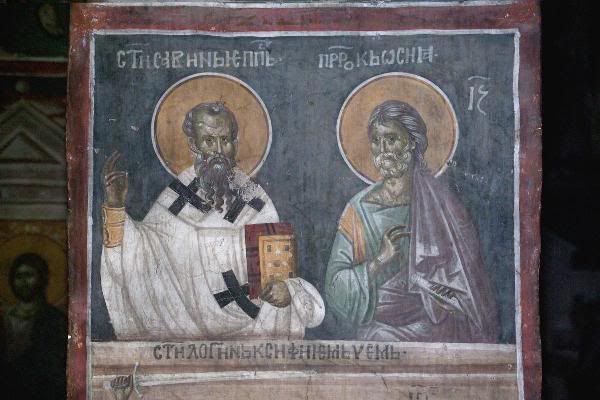
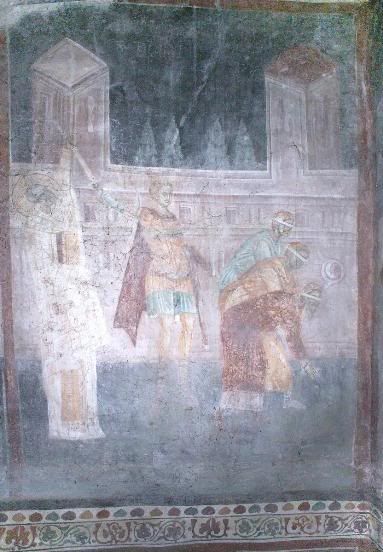
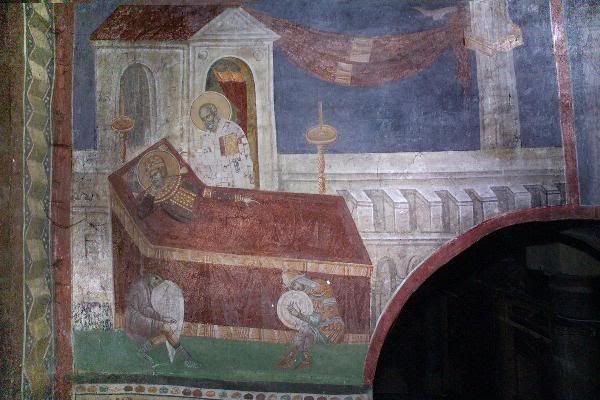
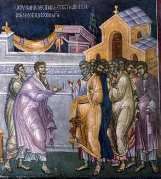
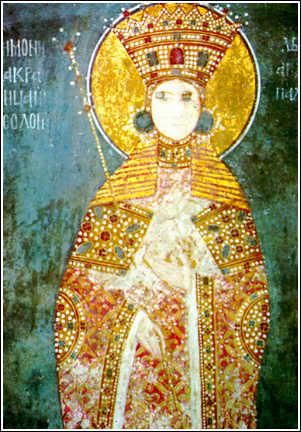
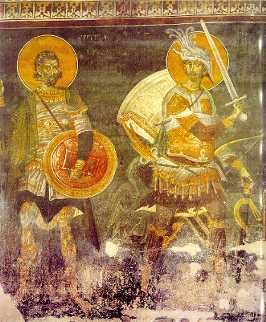
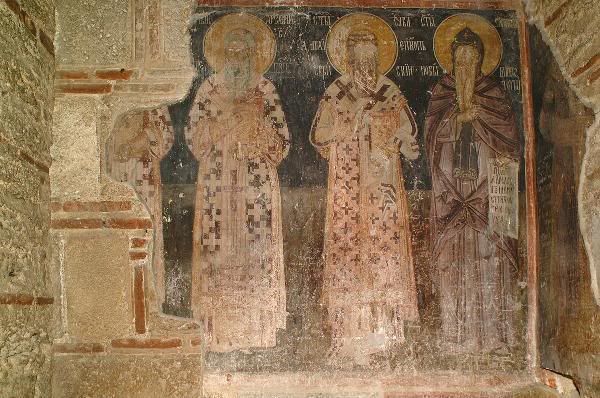
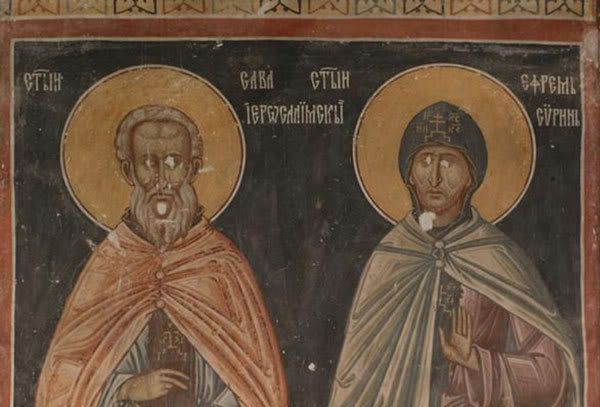
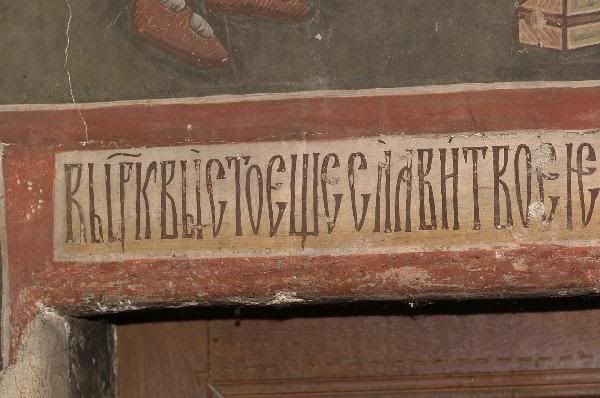
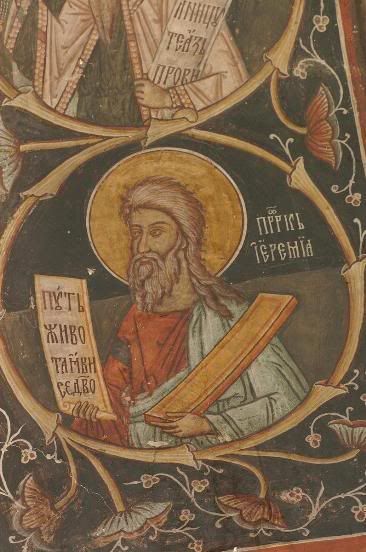
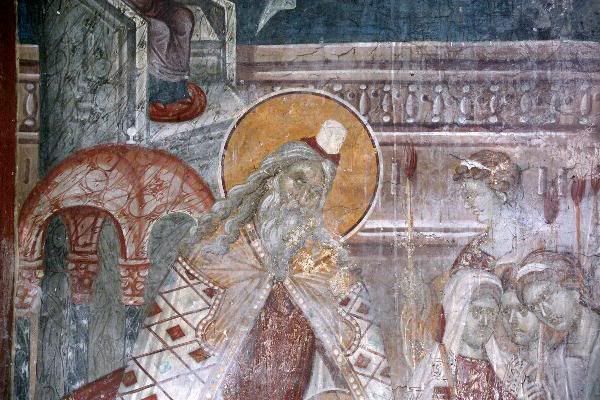
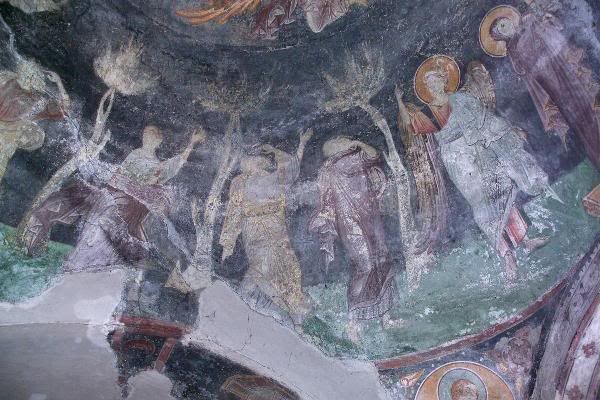
|
|
|
|
|
|
|
|
|
|